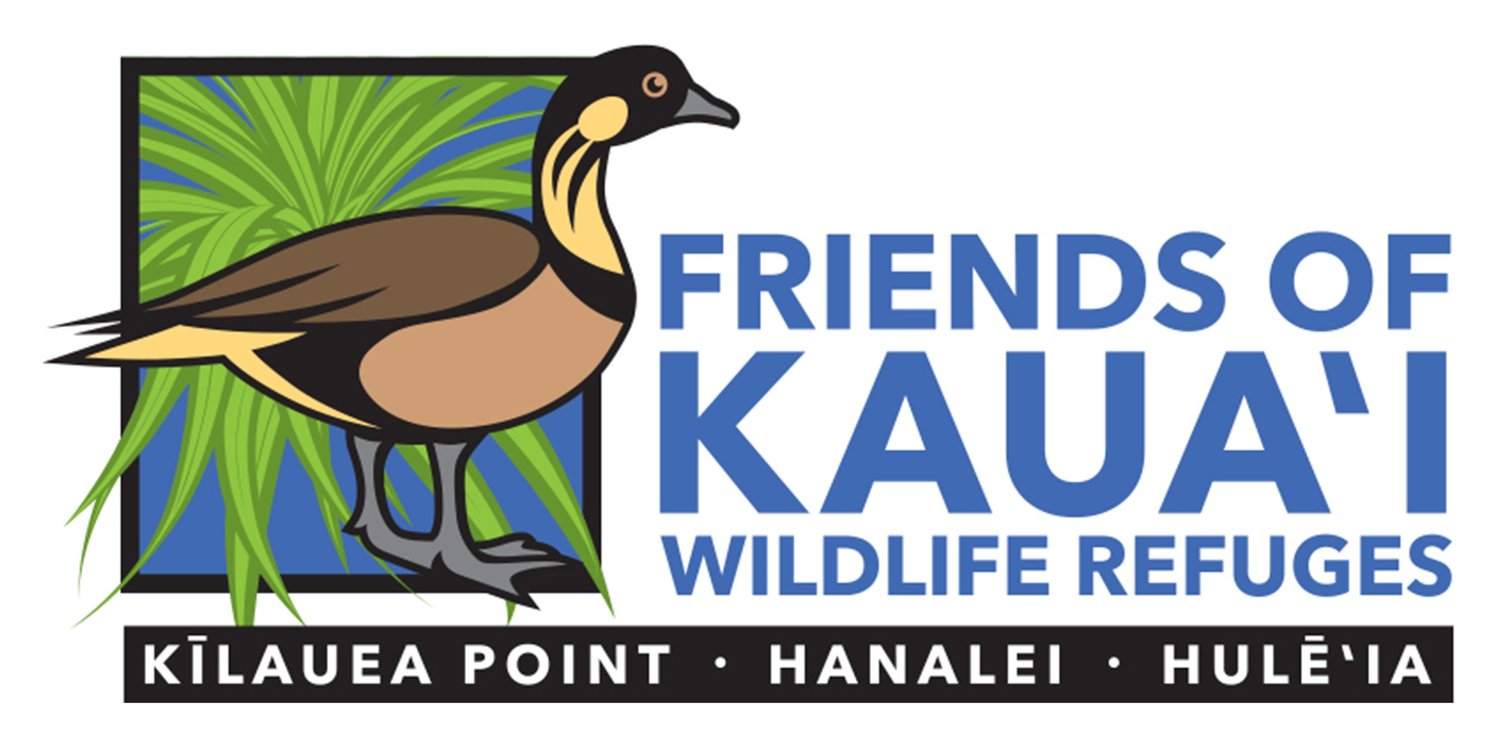Celebrating Mōlī
As we already know, Kauaʻi is a very special place. One reason is that , with the exception of the U.S. Fish & Wildlife staff stationed at Pihemanu (Midway Atoll), the North Shore of Kauaʻi is the only place in the world where mōlī (Laysan albatross) nest amongst human populations. This unique occurance creates an opportunity for Refuge staff and volunteers, local citizen scientists, wildlife enthusiasts, and community members to revel in the sights, sounds and experiences provided by spending time in the presence of these magnificent seabirds.
The first mōlī of the 2023-2024 nesting cycle were spotted on Kauaʻi at Kīlauea Point NWR on November 7th. With their return, tender reunions and courtship behaviors ensued, quickly followed by mating and trips out to sea, while the females developed their eggs.
Mōlī are generally quite monogamous and delightfully affectionate with their mates. However, if one of the mates should die, they will most likely create a new pair bond the next season. Mating and egg laying begins in mid-November and, like other seabirds, mōlī will lay only a single egg. If the egg is infertile or breaks during incubation, re-laying will not occur that year, reinforcing how precious each egg is to the future of the mōlī.
After laying her egg, the female will begin the incubation cycle, generally with a short 2-3 day span. The male then returns from sea and takes over incubation for as long as 3 weeks while his mate replenishes her energy, following the development of her large single egg. In total, incubation lasts about 65 days and duties will be shared by both parents as they take turns on the nest.
Chicks will hatch during late January to mid-February. Then both parents will continue to work together by feeding the chick a diet of regurgitated fish eggs, fish and squid oil – a diet that is rich in fatty acids and nutrients and helps each chick grow and develop quickly.
The parents will alternate coverage and feeding cycles and remain with the chick for the first 1-2 weeks. Then the chick will be left alone in its nest while its parents continue to alternate foraging forays out at sea and feeding cycles. Often, a parent may return to its chick, feed it and then return to sea after as little as 10 minutes together.
Between mid-June and early August, after 5-6 months of development, the chicks will fledge. These adolescents will then spend the next 3-5 years alone at sea foraging across the vast waters of the Northern Pacific Ocean before return to their original natal nesting site. Back on land, they will begin to participate in elaborate courtship dances and develop relationships that may lead to future mating pairs. Mating and first nesting usually occur around age 6-8, so there are often numerous non-mating “aunties” and “uncles” around the colony each year socializing and practicing their courtship rituals each season, particularly around February to March.
More than seventy percent of the world's mōlī population nests on Pihemanu, a low-lying atoll located about 1,000 miles north of Kauaʻi. The atoll is designated as a National Wildlife Refuge and more than 500,000 nests are counted each season.
Photo: Mōlī nesting on Pihemanu, Credit: USFWS/Louise Barnfield.
This vast nesting colony is extremely vulnerable to the impacts of storms and sea level rise. However, thanks to higher elevations, Kauaʻi is considered an “ark” for the future safety of this and other ground-nesting species, but they need our kokua. Mōlī are surface feeders and feed primarily at night – on anything that floats on the surface of the water including squid, fish, crustaceans and fish eggs. Unfortunately, this often includes marine debris as well. An estimated 5 tons of plastic is accidently fed to chicks each year.
Please help all of Hawaiʻi’s seabirds by keeping your cat indoors and dogs on a leash, pick up trash and debris while enjoying our beaches, and please reduce your use of single-use plastic products.
The beautiful mōlī feature a white head, neck and underbody, and a black mantle and upperwings. Their underwings have black margins and irregular streaks. They also have a dark smokey eye patch, and their bill varies from gray to yellow with a darker tip, and pink legs and feet.
Want to experience more?
Enjoys views of mōlī dancing, clacking, calling and “sky mooing” as part of their delightful courtship rituals our YouTube Channel.
Visit the Kauaʻi Albatross Network ONLINE to learn more about mōlī.
Photo Credit: FKWR
Pride In the Wild
In colonies like those on Kauaʻi with fewer males than females, same-sex pairing among female mōlī has been observed for decades and has proven to be an adaptive reproductive strategy. Every breeding season, we observe female birds in same-sex partnerships successfully nest, incubate eggs, and raise their chick together. See a related blog HERE.



